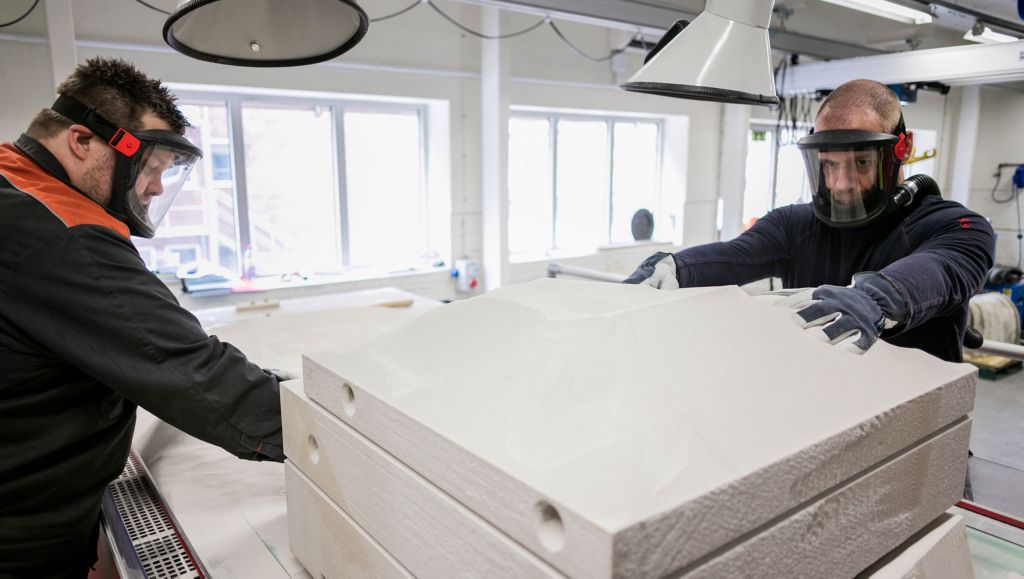3D printing with sand saves time and costs


Unlike most 3D printers that produce plastic or steel objects, this sand printer produces objects using thin 0.3 mm layers of sand and glue. The end product of the process is a ‘core’ which is used for casting component prototypes.
By making use of both metal casting and 3D sand printing, the new process involves the use of both one of the most traditional manufacturing methods and one of the most high-tech.
That has proved to be a winning combination. The sand printer is now being used in a wide range of projects within the Volvo Group. Six months since being installed, the costs saved through shortened lead times are already evident.
Another major benefit is the added confidentiality that comes from keeping the protype process entirely in house. Using a 3D printer also makes it relatively easy to make design adjustments to see what the effect of a design is in real life.
“When we are designing a part or an engine component, we can do a lot of work with digital simulation, but it’s not until we actually produce a part that we see the true result. That’s when we can know if the resulting protoype behaves exactly as it should,” says Carljohan Johansson,
Process Engineer at the Skövde plant, Powertrain production.
Taken together, these benefits have generated increased demand for the work the team does:
“It’s really fun, but our team is kind of run off its feet because we are getting so many requests.”
The project team also includes two operators: Lars Widhensparr and Johan Arvidsson. Both have worked at the plant for 19 years.
The colleague Johan Arvidsson has also enjoyed working in this new constellation and with the new technology.
“This is really fun. It’s high-end technology and it feels like the future.
To do this work, it’s important to be careful and detail oriented. There are challenges and we need to keep improving the process. We are working on limiting the amount of waste sand in the process. So, there’s still a lot to be done, but the possibilities actually feel pretty limitless.”
Ahead of installing the 3D sand printer, the team worked with the supplier to cut down the toxicity of the chemicals used in the glue mix. “From a project perspective, we have worked a great deal with
environmental issues. We made it clear from the start that we needed to have a process that is as environmentally sound as possible and that doesn’t include chemicals on the Volvo Group’s grey or black list. Getting there is something we are very proud of,” says Erika Genberg, Project Manager, Casting Projects, Powertrain production.